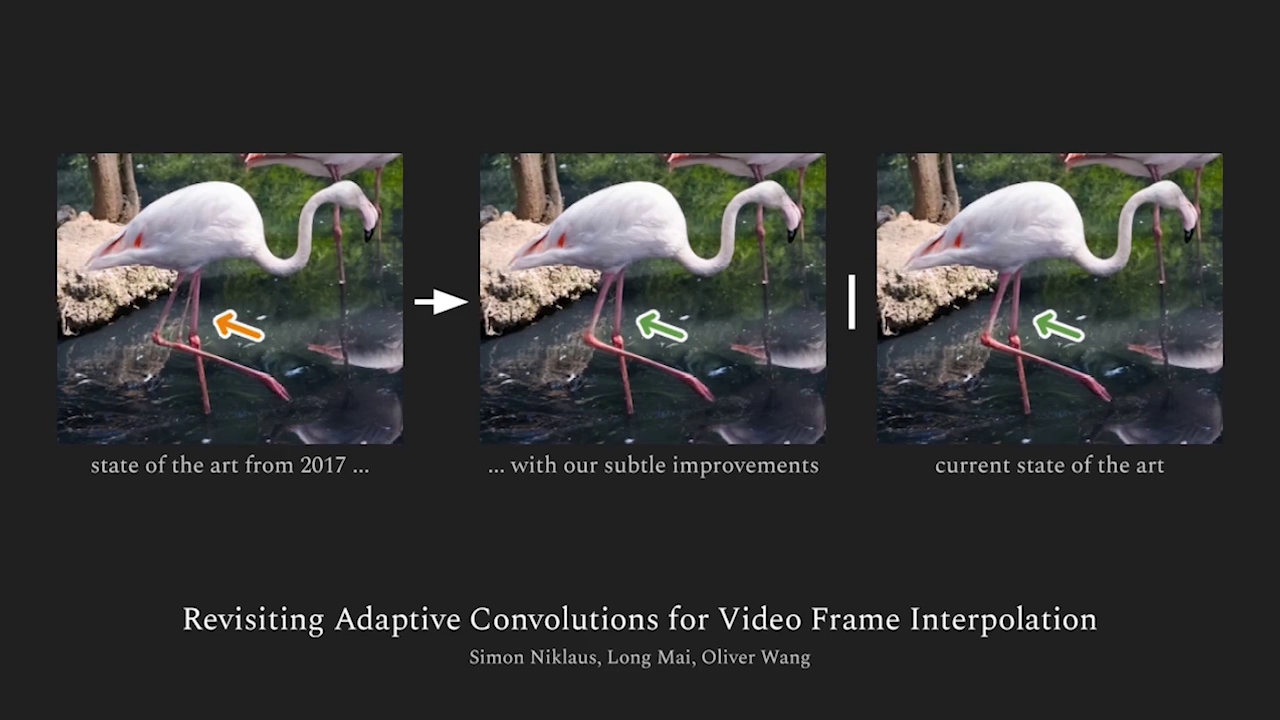revisiting-sepconv
This is a reference implementation of Revisiting Adaptive Convolutions for Video Frame Interpolation [1] using PyTorch. Given two frames, it will make use of adaptive convolution [2] in a separable manner [3] to interpolate the intermediate frame. Should you be making use of our work, please cite our paper [1].
For the original SepConv, see: https://github.com/sniklaus/sepconv-slomo
For softmax splatting, please see: https://github.com/sniklaus/softmax-splatting
setup
The separable convolution layer is implemented in CUDA using CuPy, which is why CuPy is a required dependency. It can be installed using pip install cupy or alternatively using one of the provided binary packages as outlined in the CuPy repository.
If you plan to process videos, then please also make sure to have pip install moviepy installed.
usage
To run it on your own pair of frames, use the following command.
python run.py --model paper --one ./images/one.png --two ./images/two.png --out ./out.png
To run in on a video, use the following command.
python run.py --model paper --video ./videos/car-turn.mp4 --out ./out.mp4
For a quick benchmark using examples from the Middlebury benchmark for optical flow, run python benchmark.py. You can use it to easily verify that the provided implementation runs as expected.
video
license
Please refer to the appropriate file within this repository.
references
[1] @inproceedings{Niklaus_WACV_2021,
author = {Simon Niklaus and Long Mai and Oliver Wang},
title = {Revisiting Adaptive Convolutions for Video Frame Interpolation},
booktitle = {IEEE Winter Conference on Applications of Computer Vision},
year = {2021}
}
[2] @inproceedings{Niklaus_ICCV_2017,
author = {Simon Niklaus and Long Mai and Feng Liu},
title = {Video Frame Interpolation via Adaptive Separable Convolution},
booktitle = {IEEE International Conference on Computer Vision},
year = {2017}
}
[3] @inproceedings{Niklaus_CVPR_2017,
author = {Simon Niklaus and Long Mai and Feng Liu},
title = {Video Frame Interpolation via Adaptive Convolution},
booktitle = {IEEE Conference on Computer Vision and Pattern Recognition},
year = {2017}
}

